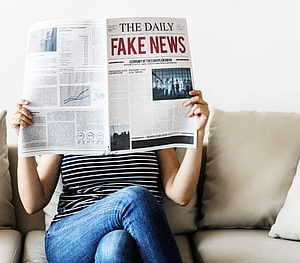One of the most significant fault lines in the modern challenge to democratic stability is the reliability of information.
The COVID-19 pandemic highlights this fault line and points to the need for greater media literacy. In essence, how do we know what we are reading or seeing is credible?
Consider some of these COVID-19 findings:
As the pandemic started to escalate across the world, the April 4-10 edition of the Alliance for Securing Democracy’s Hamilton Weekly highlighted how state-run media sites in Russia and China constantly put out information about the coronavirus.
In that week alone, Russian government and diplomatic sites published 13,000 tweets. According to the report, about 5,200 of those tweets contained the words “corona,” “virus,” or “COVID-19.” And eight of the top 10 Twitter hashtags were about the virus.
China’s government and diplomatic sites put out 13,000 tweets as well. The Hamilton Weekly tallied slightly more than 6,700 with the words “COVID,” “virus,” or both. And five of the 10 leading hashtags were related to the pandemic.
Naturally, COVID-19 is the top storyline around the world. And not all of those Russian/Chinese tweets were trying to destabilize democracies with falsehoods.
But let’s not be naïve. As Nina Jankowich, a Wilson Center disinformation fellow, said during a recent webinar, there is “fertile ground for disinformers of all stripes” because of the novelty of the virus.
The Hamilton Weekly highlighted examples in its April 4-10 report, reporting that: “Chinese state-funded media continued messaging about China’s medical aid, disputing any claims that it carries geopolitical motivations. Some content also emphasized narratives about the return to normal life in China, contrasted with coverage of serious coronavirus outbreaks elsewhere.”
In doing so, China can spin out “positive information” that takes away from the realities about the virus.
Russia used the same technique. As an example, Russian sites focused that week on how Russia is getting food aid to other nations. The subtext was making their country look good and the U.S. look bad.
More recent Hamilton Weekly reports show a decline in some of the volume of COVID-19 posts from Chinese and Russian sites. But the numbers are still dominant.
And the State Department released a report in late April warning Americans that Russia, China and Iran are using the COVID-19 pandemic to wage a major propaganda and disinformation campaign. One point of the information warfare is that the coronavirus is an American bioweapon.
There may be little we can do as individuals to stop governments from waging disinformation campaigns. But there is plenty we can do as consumers of news to block their impact.
It starts with being “media literate.” A cottage industry has grown up around how to discern credible information.
For example, the State University of New York at Stony Brook’s Center for News Literacy developed a curriculum for undergraduates so they can discern the truth of the information they are reading. The center also offers a free online program for university students elsewhere, including in Hong Kong and Russia.
It offers a free program for middle- and high-school students so they can learn how to discern fact from fiction in the information they get from social media, their peers and elsewhere.
And, responding to the blizzard of disinformation about COVID-19, it has developed a special lesson for schools so students can they distinguish reliable information from disinformation.
Here are some key tips to look for in what you are reading:
— Does the story have multiple sources?
— Does it provide context?
— Is the story balanced and non-partisan?
— Does the site or publication have an open, transparent way of acknowledging its ownership?
— Does the publication run corrections?
And think of these three questions about information you come across or comes your way, which University of Washington professors Carl Bergstrom and Jevin West focus on in their frankly titled “Calling Bullxxxx in the Age of Big Data” class:
— Who is telling me this?
— How do they know it?
— What’s in it for them?
As a consumer, also check stories with responsible fact-checking operations like AP’s Fact Check and Poynter’s #CoronaVirus FactsAlliance. This site, part of an International Fact-Checking Network, draws upon the work of 100 fact-checkers around the globe. It is updated daily, and reports on false or misleading information, such as the whopper that HIV created the coronavirus.
Beyond the pandemic, there are ample reasons to make sure the information you receive is trustworthy. We are in an election year where foreign as well as domestic sources will dabble in false or misleading information. Sites like PolitiFacts constantly check statements for accuracy.
But the coronavirus is its own unique and dangerous breeding ground for disinformation. So much so that the World Health Organization terms this an “infodemic.”
For the sake of truth, our own understanding, and the health of our democracy, we all need to become better consumers of information.

